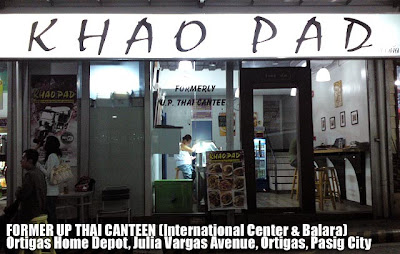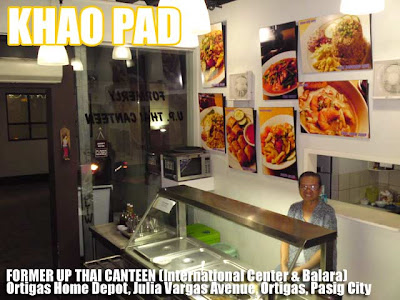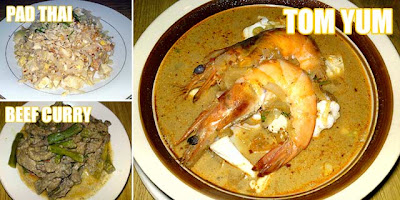 During my freshman year in U.P. Diliman, we enjoyed exploring its many culinary secrets. In the International Center, the U.P. dormitory for foreign students, was an unassuming carinderia which served authentic Thai food at very affordable student prices. It was authentic because the cook and owner was a Thai lady whom we all called Mommy Thai.
During my freshman year in U.P. Diliman, we enjoyed exploring its many culinary secrets. In the International Center, the U.P. dormitory for foreign students, was an unassuming carinderia which served authentic Thai food at very affordable student prices. It was authentic because the cook and owner was a Thai lady whom we all called Mommy Thai.The stall later on moved to Balara and moved a second time before closing shop in 2006. Many were saddened when Mommy Thai disappeared. And in fact, many U.P. students and alumni think Mommy Thai was closed for good.
 The good news is that Mommy Thai reemerged last year in a different location, the Ortigas Home Depot, as Khao Pad. It went unnoticed even by many of their old U.P. patrons until they placed the sign "formerly U.P. Thai Canteen" on its glass window. Now text messages have been going around from the many excited U.P. students who got to savor her tasty Thai lutong-bahay.
The good news is that Mommy Thai reemerged last year in a different location, the Ortigas Home Depot, as Khao Pad. It went unnoticed even by many of their old U.P. patrons until they placed the sign "formerly U.P. Thai Canteen" on its glass window. Now text messages have been going around from the many excited U.P. students who got to savor her tasty Thai lutong-bahay.
 While she serves the Thai dishes we are familiar with such as pad thai, tom yum and bagoong rice, her former patrons can still order the dishes she served in U.P. (take note that these are not in the menu but she'll gladly prepare them for you). And arguably the most popular is a dish she calls Mixed (some call it mixed seafood but it's really mixed beef, chicken, squid, vegetables and egg).
While she serves the Thai dishes we are familiar with such as pad thai, tom yum and bagoong rice, her former patrons can still order the dishes she served in U.P. (take note that these are not in the menu but she'll gladly prepare them for you). And arguably the most popular is a dish she calls Mixed (some call it mixed seafood but it's really mixed beef, chicken, squid, vegetables and egg).Each dish costs PHP120 and is good for 2 to 3 people. In fact, I ordered Mixed a while ago and it was a lot! The U.P. version was a rice topping dish good for one. I'm going back there next week with my college barkada!












